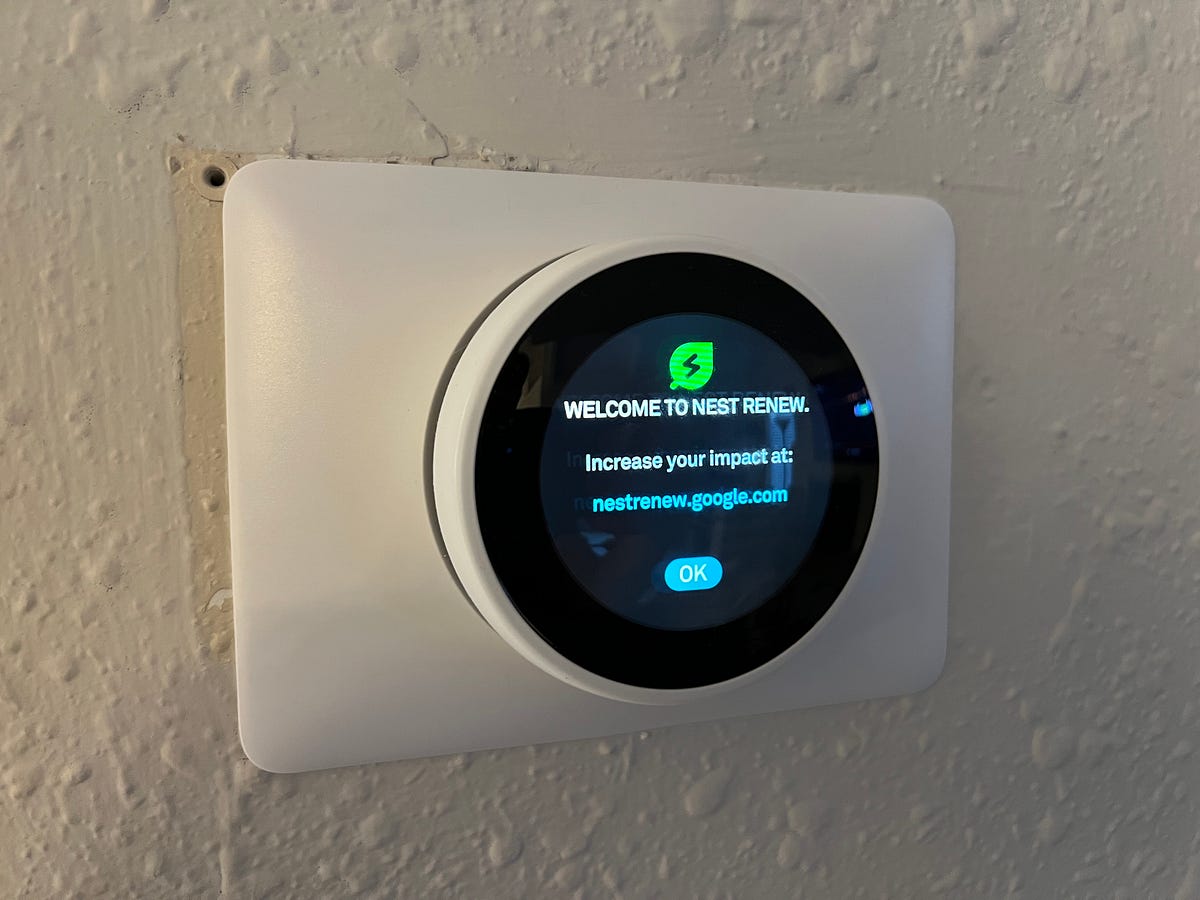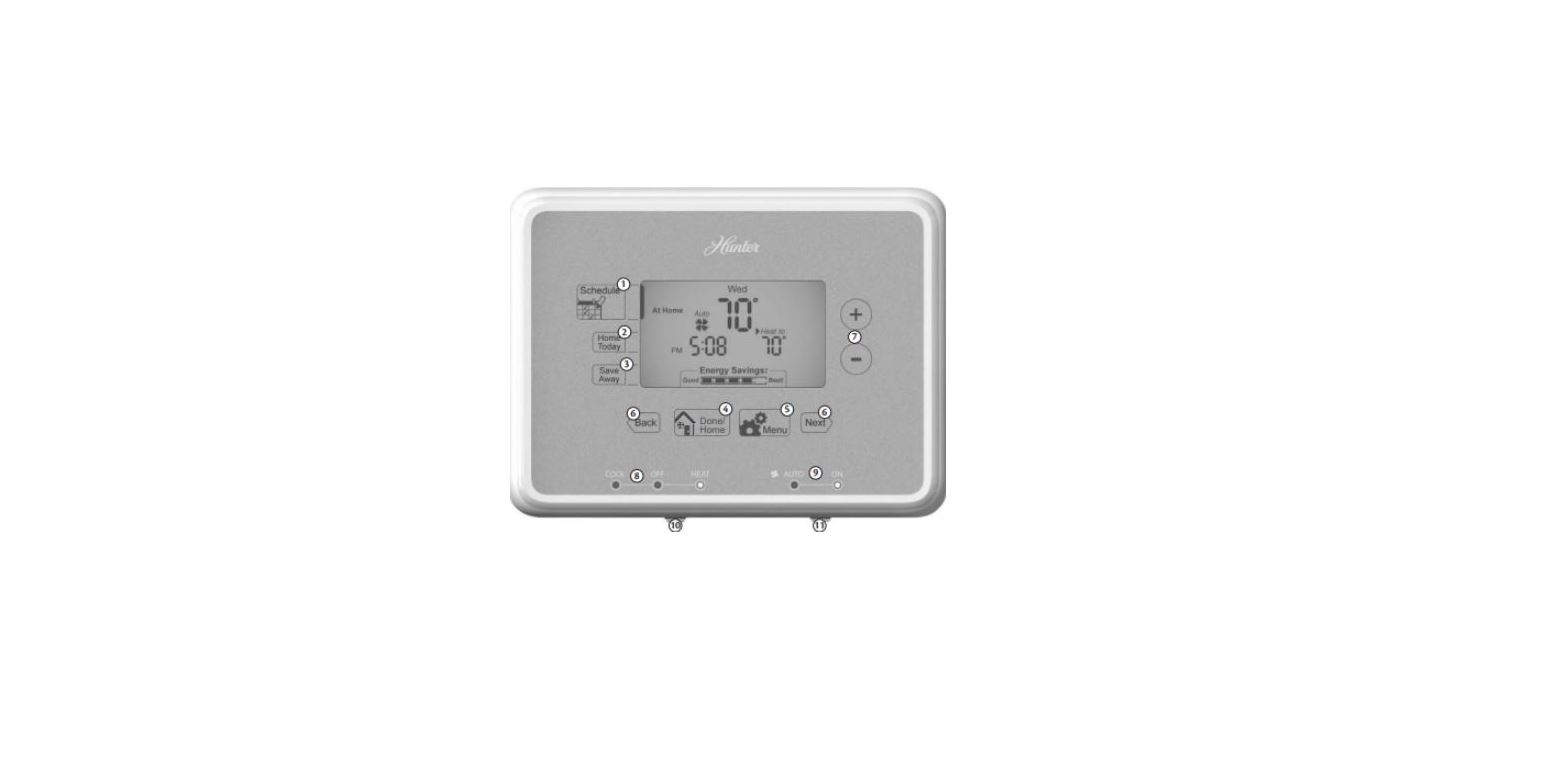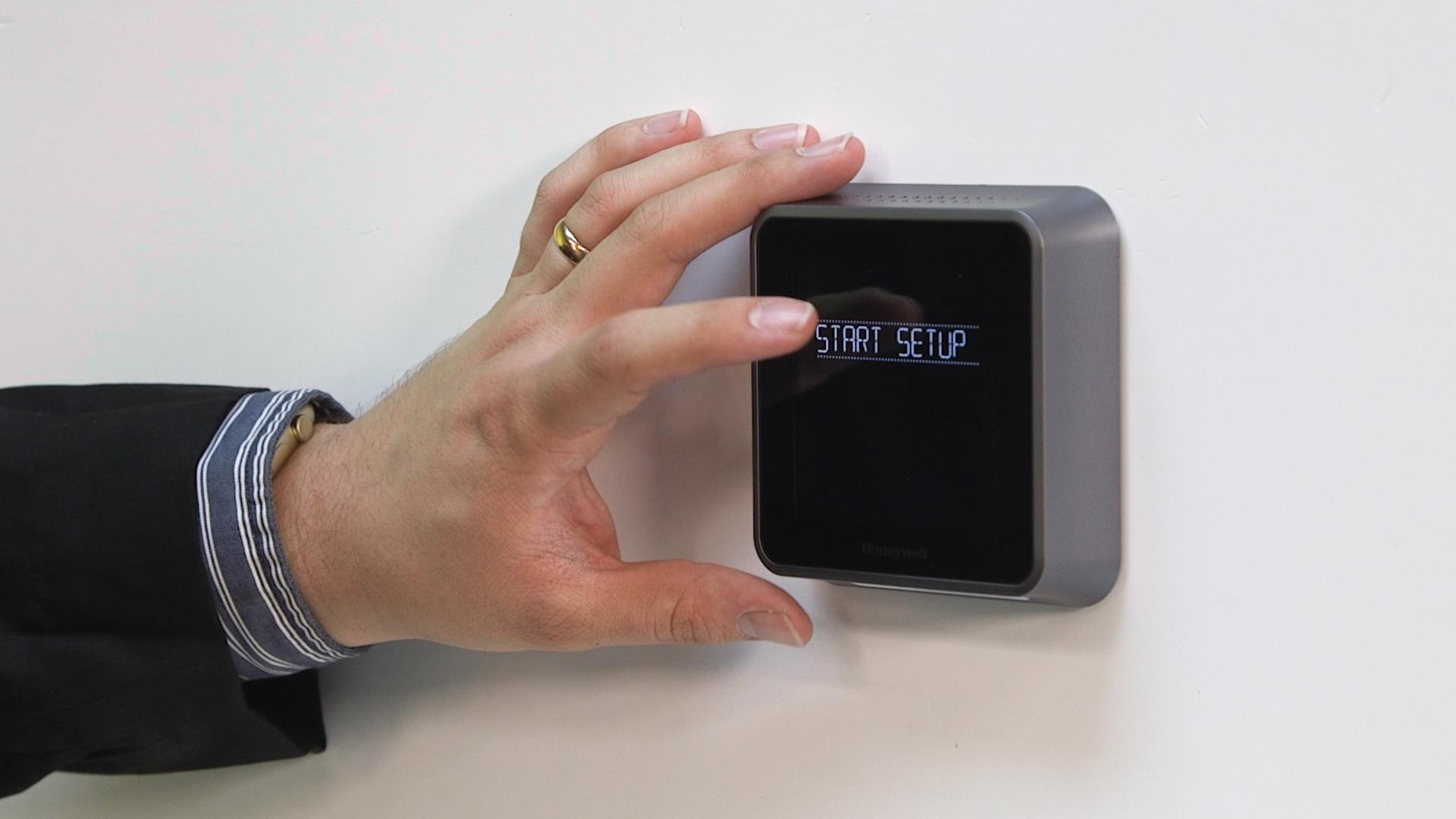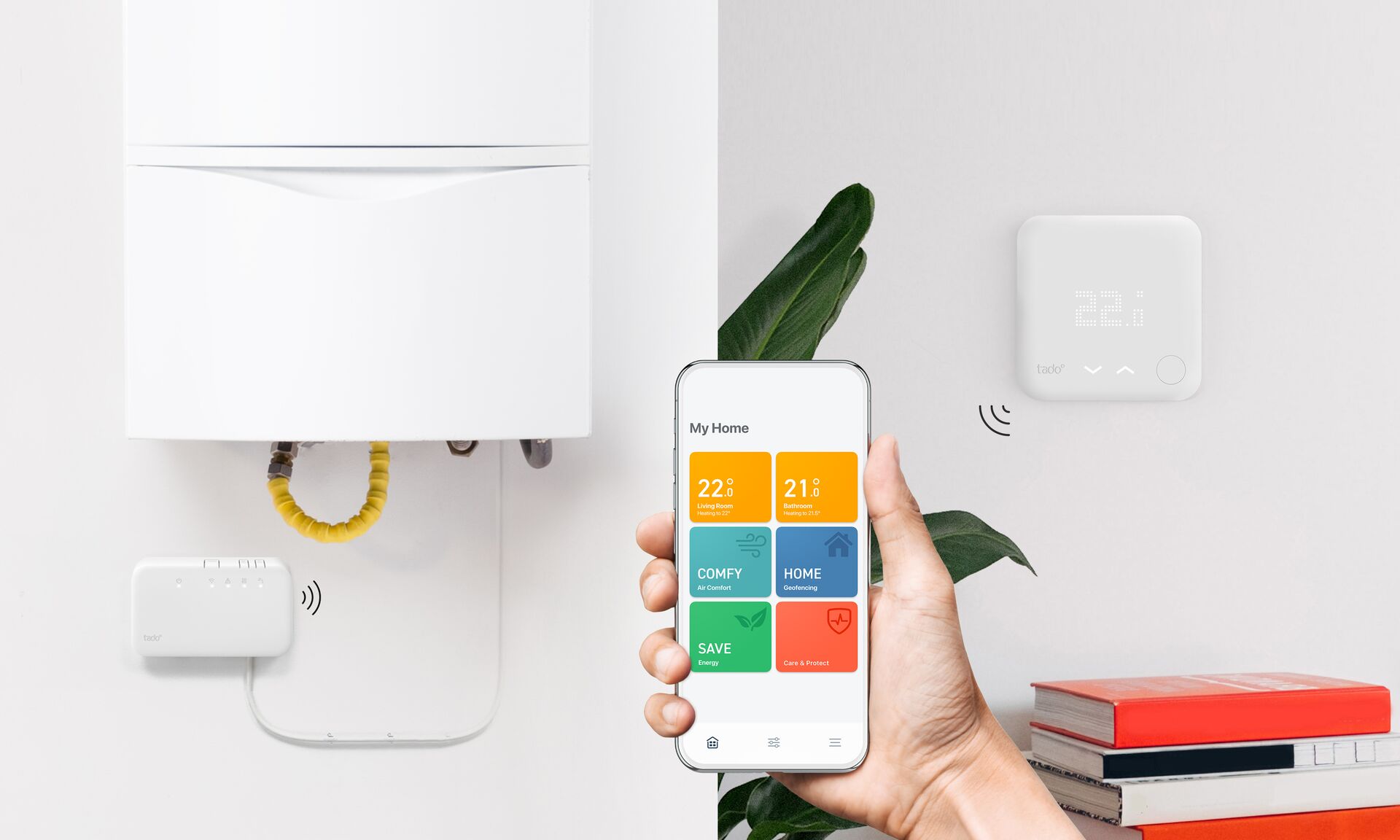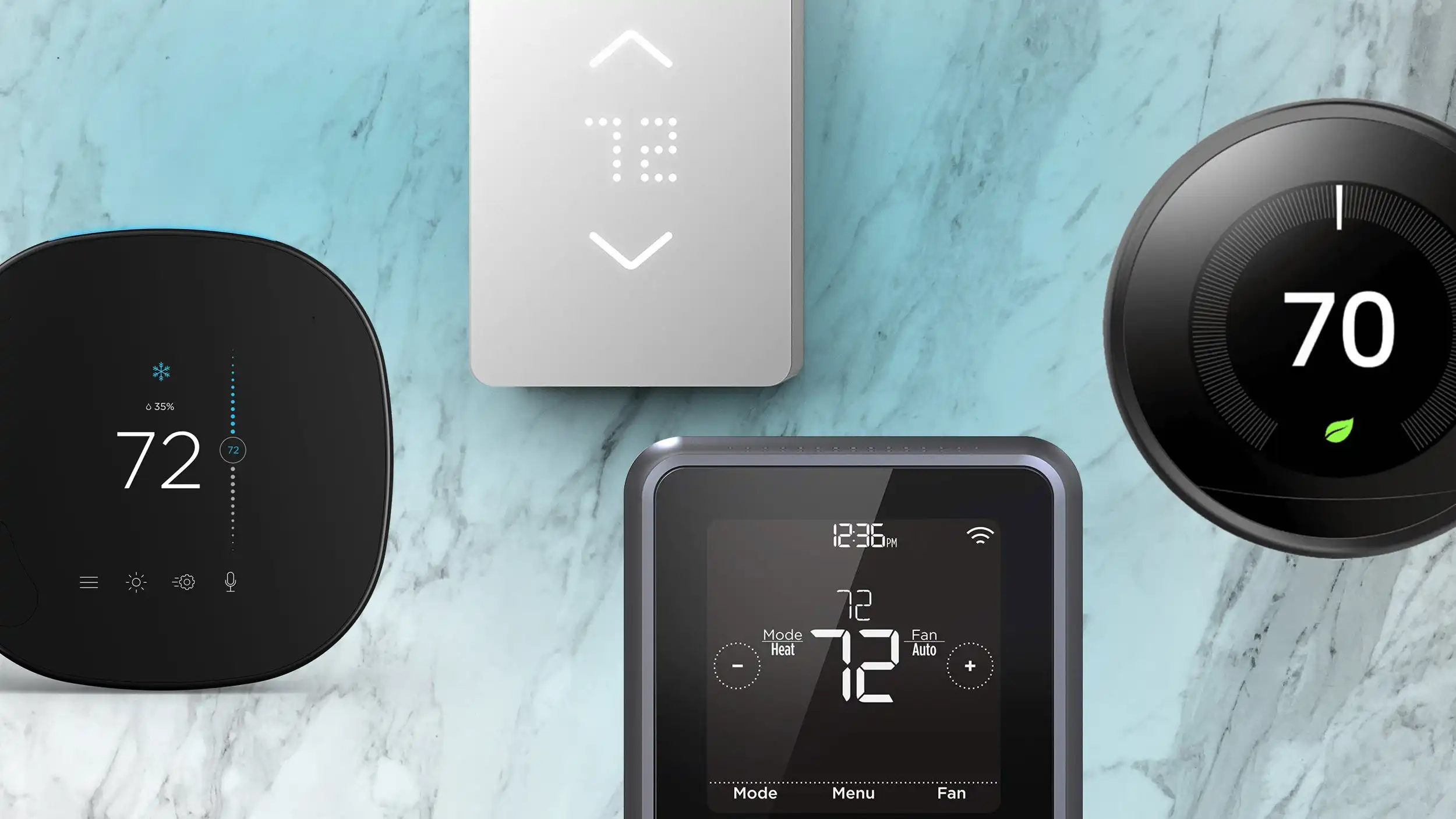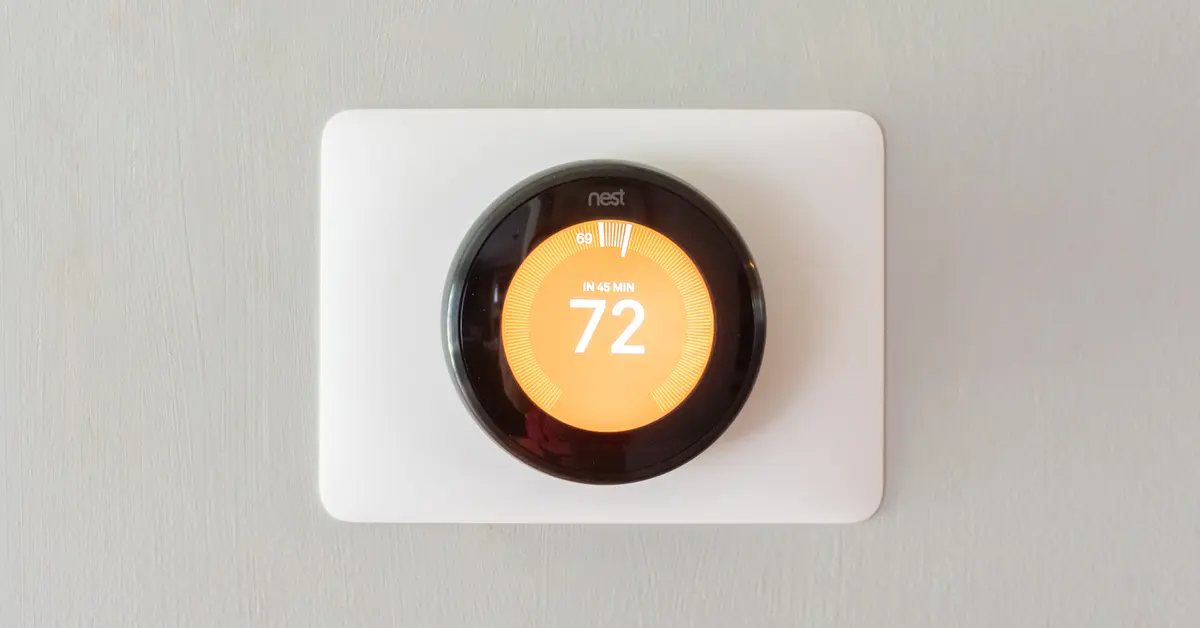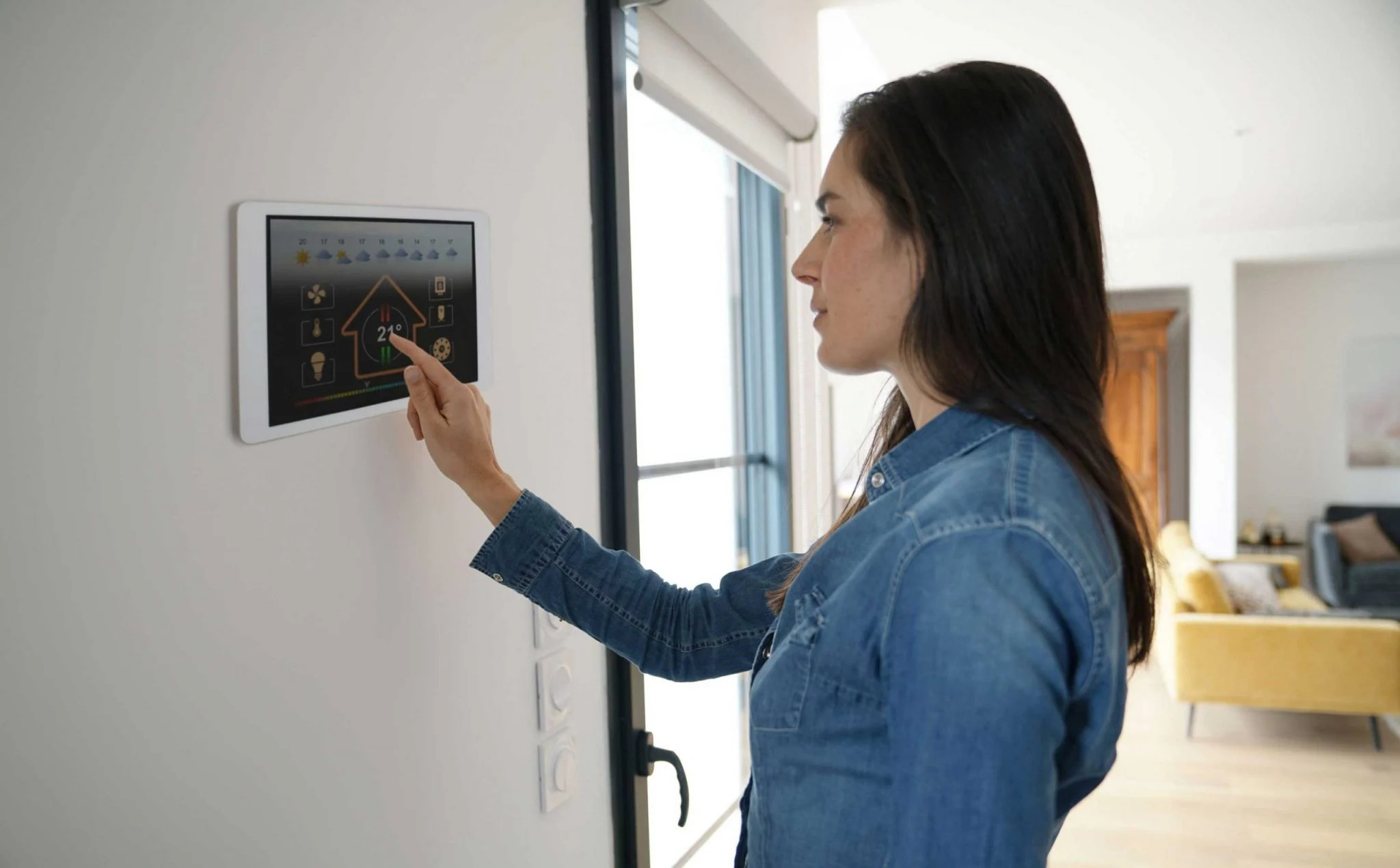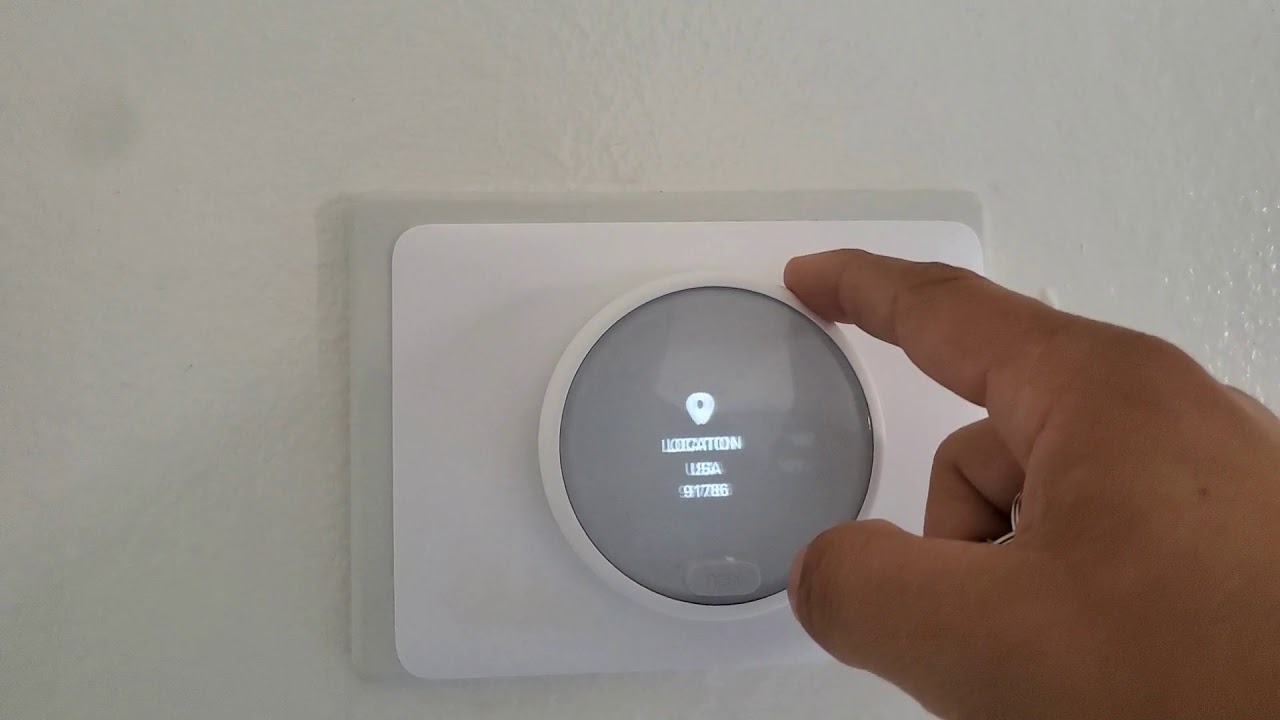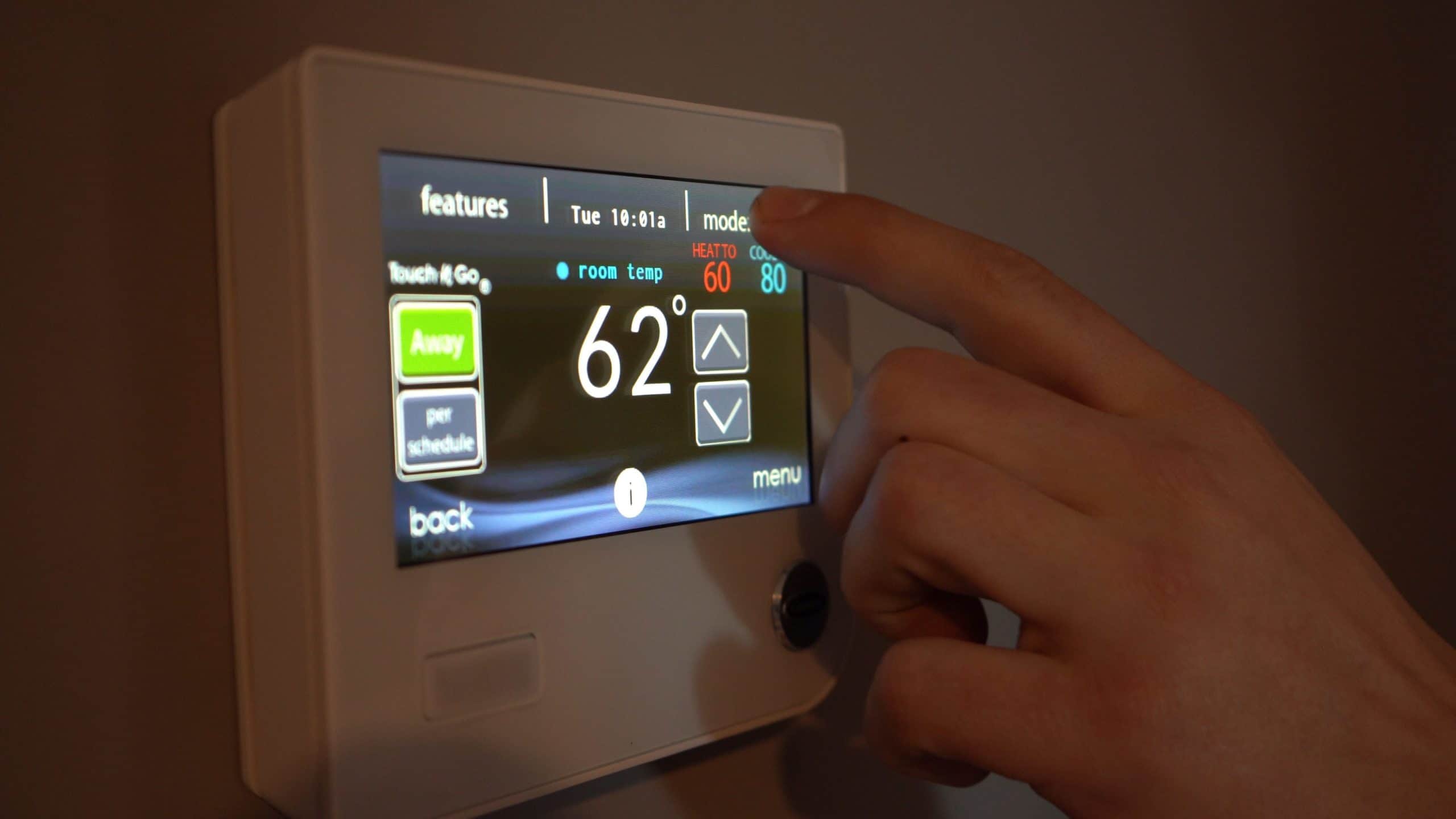Introduction
Welcome to the world of smart thermostats! With technology advancing at an unprecedented pace, our homes are becoming smarter and more efficient. One of the standout devices in this realm is the smart thermostat. This innovative piece of technology not only enhances our comfort but also helps us reduce energy consumption, making it a win-win for both our wallets and the environment.
If you’re new to the concept of smart thermostats, you may be wondering what exactly they are and how they work. In this article, we will delve into the world of smart thermostats, specifically focusing on the concept of offsetting. We’ll explore what it means, why it’s important, and how to go about offsetting your smart thermostat for optimal use.
But first, let’s briefly cover the basics. A smart thermostat is a device that allows you to control the temperature of your home remotely, using your smartphone, tablet, or computer. Unlike traditional thermostats, which require manual adjustment, smart thermostats utilize advanced sensors and algorithms to learn your preferences and adjust the temperature automatically. This not only provides convenience but also helps in saving energy and reducing utility bills.
Now, you may be wondering what exactly offsetting a smart thermostat means. Essentially, offsetting refers to adjusting the set temperature of your thermostat to account for variations in the actual temperature of your home. In simple terms, it allows you to make your smart thermostat read a little higher or lower than the actual temperature in the room.
Offsetting a smart thermostat can be necessary for various reasons. There may be spots in your home that tend to be warmer or cooler than others, causing the temperature readings to be inaccurate. Additionally, if your home has drafts or insulation issues, the actual temperature may deviate from what the thermostat indicates. By offsetting the temperature, you can ensure that your smart thermostat is providing accurate and comfortable temperature control.
In the next sections, we will explore the reasons why you might need to offset your smart thermostat and provide a step-by-step guide on how to do it. We will also discuss the benefits of offsetting and how it can contribute to a more comfortable and energy-efficient home. So, let’s dive in and discover the world of smart thermostat offsetting!
What is a smart thermostat?
A smart thermostat is a cutting-edge device that brings automation and intelligence to your home’s heating and cooling system. Unlike traditional thermostats that require manual adjustments, smart thermostats are equipped with advanced technology and internet connectivity to offer a plethora of features and benefits.
At its core, a smart thermostat allows you to control the temperature of your home remotely. With the help of a smartphone app or a web portal, you can adjust the temperature settings from anywhere, at any time. This means you can turn up the heat before you arrive home on a chilly evening or cool down the house while you’re away on vacation.
But the features of a smart thermostat go far beyond simple remote control. These intelligent devices learn your patterns and preferences over time, adapting to your schedule and making automatic adjustments to optimize comfort and energy efficiency. Some smart thermostats even have artificial intelligence capabilities, allowing them to analyze data and make proactive adjustments based on factors like humidity, weather conditions, and occupancy.
In addition to remote control and intelligent scheduling, smart thermostats offer a range of other features. Many models have energy-saving modes that automatically adjust the temperature when you’re not at home or during sleeping hours. Some integrate with smart home systems and voice assistants, allowing you to control the thermostat using voice commands.
Another key feature of smart thermostats is the ability to track and analyze energy usage data. You can view detailed reports and insights about your heating and cooling patterns, helping you identify areas where you can save energy and reduce utility bills. Some smart thermostats even provide tips and suggestions on how to optimize energy efficiency.
Installation of a smart thermostat is typically straightforward and can be done by homeowners themselves. Many models are compatible with existing heating and cooling systems, while some may require professional installation. Once installed, you can customize the settings, create temperature schedules, and monitor the thermostat’s performance through the accompanying app or web portal.
Overall, a smart thermostat is a game-changer in the realm of home automation. Its advanced features, remote control capabilities, and energy-saving functionalities make it an essential device for modern homes. Whether you’re looking to increase comfort, save energy, or simply have more control over your home’s temperature, a smart thermostat is a worthwhile investment.
How does a smart thermostat work?
A smart thermostat may seem like a complex device, but its underlying principles are quite straightforward. Understanding how a smart thermostat works can help you make the most of its features and optimize energy efficiency in your home.
At its core, a smart thermostat utilizes a combination of sensors, algorithms, and internet connectivity to monitor and control the temperature of your home. The device typically consists of the following components:
- Temperature Sensor: A smart thermostat is equipped with a temperature sensor that measures the ambient temperature in your home. This sensor provides real-time data to the thermostat, allowing it to make adjustments based on your desired temperature settings.
- Occupancy Sensor: Some smart thermostats also include occupancy sensors that detect whether there are people present in a particular room or area. This helps the thermostat determine when to adjust the temperature, based on whether the room is occupied or vacant.
- Internet Connectivity: One of the key features of a smart thermostat is its ability to connect to the internet. This enables you to control the thermostat remotely using a smartphone, tablet, or computer. It also allows the thermostat to receive weather updates and other data that can influence temperature control.
- Algorithms and Learning Capabilities: Smart thermostats employ advanced algorithms and learning capabilities to optimize temperature control. They learn your schedule and preferences over time, automatically adjusting the temperature settings to ensure comfort and energy efficiency. Some models even provide energy-saving recommendations and insights based on your usage patterns.
The operation of a smart thermostat typically involves the following steps:
- Initial Setup: After installation, you will need to set up your smart thermostat by connecting it to your home’s Wi-Fi network and downloading the accompanying app on your smartphone.
- Temperature Settings: Using the app or the thermostat’s control panel, you can set your desired temperature range and create temperature schedules according to your daily routine. The thermostat will use this information as a baseline for maintaining your preferred comfort level.
- Sensor Readings: The temperature sensor continually measures the ambient temperature in your home, while occupancy sensors detect movement and presence in different areas. This data is fed into the thermostat, providing real-time information about temperature conditions and occupancy patterns.
- Adjustments and Optimizations: Based on the sensor readings and the temperature settings you’ve specified, the smart thermostat will make automatic adjustments to maintain a comfortable environment. It may increase or decrease the heating or cooling to reach the desired temperature in each room.
- Remote Control: With internet connectivity, you can access and control your smart thermostat from anywhere using your smartphone or computer. This allows you to adjust the temperature settings, create new schedules, and monitor energy usage even when you’re not at home.
By leveraging its sensors, algorithms, and internet connectivity, a smart thermostat offers precise temperature control and energy-saving capabilities. It adapts to your preferences and patterns, ensuring a comfortable home while minimizing energy waste.
What does offsetting a smart thermostat mean?
Offsetting a smart thermostat refers to the process of adjusting the set temperature to account for variations in the actual temperature of your home. Essentially, it involves making the smart thermostat read a little higher or lower than the true temperature in the room.
The need for offsetting arises from several factors. Firstly, there may be areas in your home that are consistently warmer or cooler than others. Due to variations in insulation, sunlight exposure, or airflow, these spaces can have different temperature readings than the rest of the house. By offsetting the smart thermostat, you can compensate for these temperature discrepancies and ensure accurate temperature control throughout your home.
Additionally, drafty areas or poor insulation can also lead to temperature variations. For example, if you have a window with a draft, the temperature near that window may be colder than what the thermostat measures. By offsetting the thermostat to a slightly higher temperature, you can ensure that the room remains comfortably warm despite the draft.
Offsetting can also be useful if you have localized sources of heat or cold in your home. For example, if your thermostat is located near a fireplace or a vent blowing cool air, it may not accurately reflect the temperature of the whole room. By offsetting the thermostat, you can account for the influence of these localized sources and adjust the set temperature accordingly.
It’s important to note that offsetting a smart thermostat does not affect the actual temperature in your home. It only adjusts the set temperature that the thermostat uses as a reference point. For example, if you want the room to be at a comfortable 72 degrees Fahrenheit, but you find that the thermostat consistently reads 2 degrees cooler than the actual temperature, you can offset it by +2 degrees to achieve the desired comfort level.
Most smart thermostats provide the option to offset the temperature directly through their settings or mobile apps. You can usually specify the offset value in degrees, either positive or negative, based on your specific needs. The thermostat will then adjust its temperature readings and control the heating or cooling accordingly.
By offsetting a smart thermostat, you can ensure that it accurately reflects the temperature conditions in your home, leading to improved comfort and energy efficiency. Whether it’s compensating for temperature variations in different areas or accounting for localized heat or cold sources, offsetting allows you to fine-tune your thermostat settings for optimal performance.
Why would you need to offset a smart thermostat?
Offsetting a smart thermostat can be necessary for several reasons, all of which revolve around ensuring accurate temperature control and maximizing comfort in your home. Let’s explore some common scenarios where you may need to offset your smart thermostat:
1. Temperature Variations: Different areas of your home may have temperature variations due to factors such as insulation, sunlight exposure, or airflow. By offsetting the smart thermostat, you can account for these variations and maintain consistent temperature throughout your living space.
2. Drafty Areas: If you have drafty windows or doors in certain rooms, the actual temperature may be lower than what the thermostat reads. By offsetting the thermostat to a slightly higher temperature, you can compensate for the draft and ensure a comfortable environment.
3. Localized Heat or Cold Sources: If there are localized heat or cold sources in a room, such as fireplaces or vents blowing cool air, the thermostat may not accurately reflect the overall temperature. Offset the thermostat to account for these localized sources and ensure proper temperature control.
4. Calibration Issues: In some cases, the built-in temperature sensors of a smart thermostat may not be perfectly calibrated, resulting in inaccurate temperature readings. By offsetting the thermostat, you can manually adjust the set temperature to align with the actual temperature in the room.
5. Personal Comfort Preferences: Each individual may have their own comfort preferences when it comes to room temperature. If you find that the default temperature setting on your smart thermostat does not align with your desired comfort level, offsetting the thermostat can help personalize the temperature to your liking.
6. Accommodating Medical Conditions: Certain medical conditions, such as respiratory issues or sensitivity to temperature fluctuations, may require maintaining precise temperature control. By offsetting the smart thermostat, you can fine-tune the temperature settings to accommodate these specific medical needs.
7. Weather Changes: External weather conditions can impact the temperature inside your home. If you live in an area with extreme weather conditions, offsetting the thermostat can help compensate for temperature changes and maintain a comfortable indoor environment.
8. Zoned Heating and Cooling: If you have a zoned heating and cooling system in your home, where different areas have independent temperature control, offsetting the thermostat can help ensure that each zone maintains the desired temperature accurately.
Ultimately, the need to offset a smart thermostat arises from the desire for precise temperature control and personalized comfort. By understanding the unique conditions and factors in your home, you can adjust the thermostat to accommodate these variations and create a comfortable living environment.
How to offset a smart thermostat?
Offsetting a smart thermostat is a relatively simple process that can typically be done through the thermostat’s settings or accompanying mobile app. Here are the general steps to follow when offsetting a smart thermostat:
- Access the Thermostat Settings: Start by locating the settings menu on your smart thermostat. This can usually be done through the physical control panel on the thermostat itself or through the mobile app associated with your thermostat model.
- Navigate to the Temperature Offset Option: Once in the settings menu, look for the temperature offset or calibration option. The exact wording may vary depending on the thermostat brand and model, but it should be related to adjusting the temperature reading or offsetting the thermostat.
- Specify the Offset Value: In the temperature offset option, you will typically have the ability to enter a positive or negative value to adjust the temperature reading. A positive value will make the thermostat read higher than the actual temperature, while a negative value will make it read lower.
- Set the Offset Value: Based on your specific needs, enter the desired offset value. This can vary depending on the temperature variations or comfort preferences you wish to account for. It’s recommended to start with a small offset value (e.g., +/- 1 degree) and then adjust it as necessary.
- Save and Monitor: Once you’ve set the offset value, save the changes and exit the settings menu. Your smart thermostat will now adjust its temperature readings based on the offset you’ve specified.
- Monitor and Fine-tune: After offsetting the thermostat, it’s important to monitor its performance and make further adjustments if needed. Observe the temperature in the room and compare it to the reading on the thermostat. If necessary, fine-tune the offset value to ensure the thermostat consistently reflects the actual temperature.
It’s worth noting that the process of offsetting a smart thermostat may vary slightly depending on the specific brand and model you have. Some smart thermostats may offer more advanced options or specific features related to temperature offsetting. Refer to the manufacturer’s instructions or online resources for detailed guidance tailored to your specific smart thermostat.
By following these steps and customizing the temperature offset, you’ll be able to ensure that your smart thermostat provides accurate temperature readings and achieves your desired comfort level throughout your home.
Benefits of offsetting a smart thermostat
Offsetting a smart thermostat offers a range of benefits that contribute to improved comfort, energy efficiency, and overall satisfaction with your heating and cooling system. Let’s explore some of the key benefits of offsetting a smart thermostat:
1. Accurate Temperature Control: By offsetting the smart thermostat, you can ensure that it accurately reflects the actual temperature in your home. This allows you to maintain a consistent and comfortable indoor environment, regardless of temperature variations or localized heat sources.
2. Enhanced Comfort: Offset adjustments help personalize the temperature settings to align with your specific comfort preferences. Whether you prefer a slightly warmer or cooler environment, offsetting allows you to tailor the thermostat readings to your liking, ensuring optimal comfort throughout your living spaces.
3. Energy Efficiency: A smart thermostat is designed to optimize energy usage, and offsetting plays a role in achieving this efficiency. By accurately reflecting the temperature conditions in your home, the thermostat can make more precise adjustments, avoiding unnecessary heating or cooling and helping to reduce energy waste.
4. Cost Savings: Improved energy efficiency directly translates into cost savings on your utility bills. By offsetting the smart thermostat and optimizing temperature control, you can reduce energy consumption, leading to lower heating and cooling costs over time.
5. Personalized Control: Offset adjustments give you greater control over your smart thermostat, allowing you to align it with your specific needs and living conditions. Whether you have drafty areas or varying temperature zones in your home, you can fine-tune the thermostat to provide the comfort and control that suits your lifestyle.
6. Consistency Across Zones: If you have a zoned heating and cooling system, offsetting the smart thermostat in each zone ensures that the desired temperature is maintained accurately. This helps eliminate temperature discrepancies between different areas of your home, providing consistent comfort throughout.
7. Adaptation to External Factors: Offset adjustments can account for external factors like weather changes. By slightly modifying the temperature readings, the thermostat can adapt to shifts in outdoor temperature, ensuring that your indoor environment remains comfortable despite fluctuating weather conditions.
8. Improved System Performance: Accurate temperature readings and optimal temperature control provided by offsetting contribute to better performance of your heating and cooling system. With the thermostat operating at its best, you can expect enhanced longevity and overall efficiency from your HVAC equipment.
Offsetting a smart thermostat is a simple yet powerful way to fine-tune your heating and cooling system. By achieving accurate temperature control, personalized comfort, energy efficiency, and cost savings, offsetting ensures that your smart thermostat operates at its full potential, resulting in a more comfortable and environmentally friendly home.
Conclusion
Smart thermostats have revolutionized the way we control the temperature in our homes, providing convenience, energy efficiency, and personalized comfort. Offset adjustments play a crucial role in maximizing the benefits of these intelligent devices.
By offsetting a smart thermostat, you can ensure accurate temperature control and comfort throughout your home. It allows you to compensate for temperature variations, drafty areas, localized heat or cold sources, and other factors that can affect the accuracy of temperature readings. Fine-tuning the thermostat settings through offset adjustments provides a tailored and personalized experience, aligning the temperature with your specific preferences and needs.
Offsetting a smart thermostat also contributes to energy efficiency and cost savings. With accurate temperature control and reduced energy waste, you can optimize your HVAC system’s performance and reduce utility bills. Additionally, offsetting allows for consistency across different zones, making sure each area maintains the desired comfort level.
As technology continues to advance, smart thermostats will only become more sophisticated and intuitive. Taking advantage of the offsetting feature ensures that you make the most of your smart thermostat and maintain a comfortable and energy-efficient home environment.
Whether you’re experiencing temperature variations, have specific comfort preferences, or simply want to achieve precise temperature control, offsetting your smart thermostat is a valuable tool in achieving the optimal indoor climate. Explore the settings of your smart thermostat, make the necessary adjustments, and enjoy the benefits of a comfortably controlled home.
So, take the time to explore the offsetting capabilities of your smart thermostat and unleash its full potential in providing accurate temperature control and personalized comfort. With offset adjustments, you can create a cozy living space while saving energy and reducing your carbon footprint—a win-win for both your comfort and the environment.







